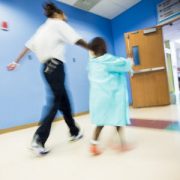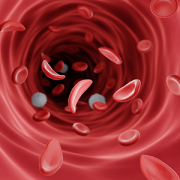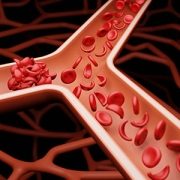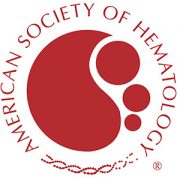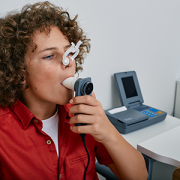Cardiovascular and GI symptom relief
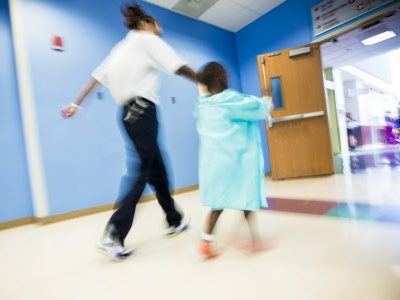
By adding antroduodenal manometry to the cardiovascular tilt table test, doctors in the GI Motility Program are able to collaborate with cardiologists to treat both cardiovascular and gastroenterological symptoms in children with complex orthostatic intolerance.
Physicians treating pediatric patients with complex orthostatic intolerance issues often face a double whammy – the children exhibit symptoms of their cardiovascular condition, but secondary issues relating to gastrointestinal functions are also common. That’s why cardiologists and gastroenterologists at Children’s National Health System have collaborated in recent years to diagnose and find comprehensive treatment solutions for patients with conditions such as neurally mediated hypotension (NMH) and postural orthostatic tachycardia syndrome (POTS).
Their innovative team approach was highlighted in a study of their first 35 patients from age 10-23, published in the Journal of Pediatric Gastroenterology and Nutrition last fall – patients who experienced relief for multiple symptoms thanks to treatment at Children’s National.
The collaboration is possible because of the advancements in gastroenterological diagnostics here – specifically related to the comprehensive GI Motility testing. While patients with POTS can exhibit an abnormal heart rate, low blood pressure, headaches, fatigue or weight loss, their gastroenterological symptoms like nausea and constipation are often under recognized, says Children’s Director of the Comprehensive GI Motility Program Anil Darbari, M.D., MBA, who co-authored the study with a team including Jeffrey Moak, M.D., Director of the Electrophysiology Program at Children’s.
Through antroduodenal manometry of the stomach and upper small intestine, in combination with the cardiovascular tilt table test, the team has been able to more accurately diagnose and treat these patients.
“We have the ability to do them together, thereby making the connection between these two conditions and providing a path for management or treatment,” Dr. Darbari said.
Typically, by the time he sees these patients, those with complex medical issues have often seen several other gastroenterologists at multiple centers, and have been through a lot. The study found that overall, antroduodenal manometry was abnormal in 26 of 35 (74%) patients either at baseline or during tilt table testing in subjects with orthostatic intolerance. Darbari and his colleagues concluded that upper GI motility studies should always be part of the comprehensive evaluation for this population of patients, because treating the autonomic condition improved their gastroenterological symptoms as well.
What does the future look like for this double-whammy approach?
“We have a cohort of over 100 patients with these issues who have been evaluated using this combined diagnostic approach,” Dr. Darbari said. “This gives the team the knowledge and opportunity to help even more kids, which is very rewarding.”
In addition to comprehensive assessment and medical approaches, Children’s National is home to leaders in minimally invasive laparoscopic and endoscopic diagnostic and corrective procedures that have enabled Children’s GI motility specialists and the teams they collaborate with to offer the next level of comprehensive pediatric medical care.


